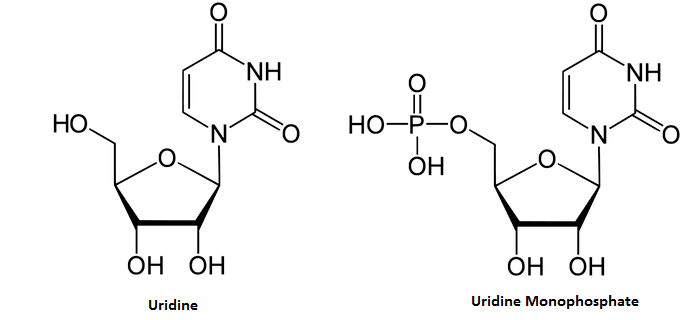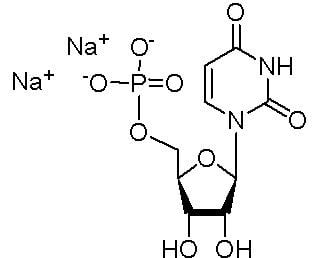Formula C9H13N2O9P Melting point 202 °C | Molar mass 324.1813 g/mol | |
 | ||
Stimulants vs nootropics caffeine vs uridine monophosphate
Uridine monophosphate (UMP), also known as 5′-uridylic acid (conjugate base uridylate), is a nucleotide that is used as a monomer in RNA. It is an ester of phosphoric acid with the nucleoside uridine. UMP consists of the phosphate group, the pentose sugar ribose, and the nucleobase uracil; hence, it is a ribonucleoside monophosphate. As a substituent or radical its name takes the form of the prefix uridylyl-. The deoxy form is abbreviated dUMP.
Contents
- Stimulants vs nootropics caffeine vs uridine monophosphate
- Biosynthesis
- Effects on animal intelligence
- In foods
- References

Biosynthesis

Uridine monophosphate is formed from Orotidine 5'-monophosphate (orotidylic acid) in a decarboxylation reaction catalyzed by the enzyme orotidylate decarboxylase. Uncatalyzed, the decarboxylation reaction is extremely slow (estimated to occur on average one time per 78 million years). Adequately catalyzed, the reaction takes place once per second, an increase of 1017-fold.

In humans, the orotidylate decarboxylase function is carried out by the protein UMP synthase. Defective UMP synthase can result in orotic aciduria, a metabolic disorder.
Effects on animal intelligence

In a study, gerbils fed a combination of uridine monophosphate, choline, and docosahexaenoic acid (DHA) were found to have significantly improved performance in running mazes over those not fed the supplements, implying an increase in cognitive function.
In foods
In brain research studies, uridine monophosphate is used as a convenient delivery compound for uridine. Uridine is the active component of this compound. Uridine is present in many foods, mainly in the form of RNA. Non-phosphorylated uridine is not bioavailable beyond first-pass metabolism, as it is almost entirely catabolised in the liver and gastrointestinal tract.
